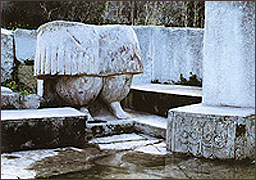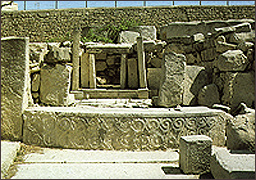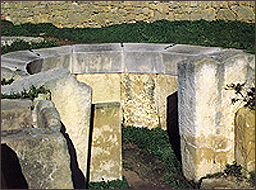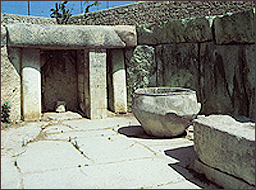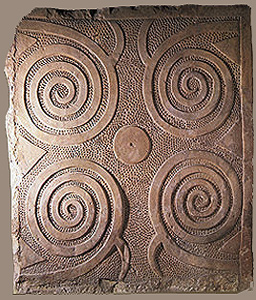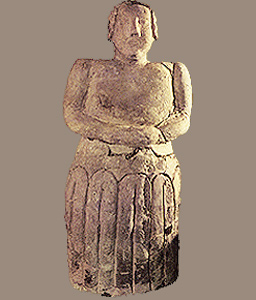 |
 |
TARXIEN TEMPLE – c. 3000-2500 BC |
Page 5/6 |
The temple complex that gives its name to the final phase of the Temple Period is Tarxien, located a few 100 metres from the
Hypogeum. Made up of 4 distinct units, Tarxien housed the richest deposit of prehistoric art objects.
Tarxian’s first unit was constructed in the Ggantija phase [c. 3600-3000 BC] with a characteristic five-apsed plan. It is physically separate to the 3 other units, which are united by an outer wall. The final unit was constructed in between the 2nd and 3rd units, which then created an elaborate temple plan consisting of three pairs of apses symmetrically disposed along the long axis leading the visitor from the entrance to the South Temple’s inner niche with its elaborately carved spirals – the innermost part of Tarxian. Structures in Tarxian demonstrate not only great precision in construction, but also the principles of the vertical arch and the domed ceiling.
The centre-piece of the Tarxian complex, in the vestibule, contains what would have been a 2 metre high stone sculpture of a ‘venus’ figure. This sculpture was flanked by elaborate sculpture reliefs of both spirals and animals.
The South Temple was once dominated by what would have been a colossal statue of the usual obese type, it would have stood about 2m high
The inner niche of the South Temple at Tarxien, a raised threshold carved with spirals seems to inhibit access to the innermost part of the temple
Tarxien Middle Temple, note the perfect fit of the upright slabs, the horizontal course has a inlined surface sugessting the spring of an arched dome
Left apse of the Middle Temple at Tarxien, a huge basin restored from several pieces, it was originally constructed from a single block of stone
One of two large screens made from Globigerina limestone used to flank the inner side of the Trilithic passageway into the second apses of Tarxien's Middle Temple. The screen features symmetrical spirals in low relief on a pitted background
Terracotta statue of a standing figure, possibly male, it differs from the more common 'fat' figures
→
Bradshaw Foundation
